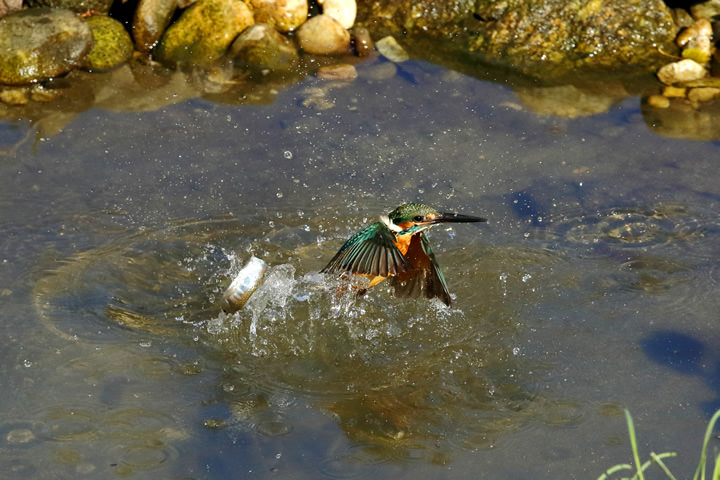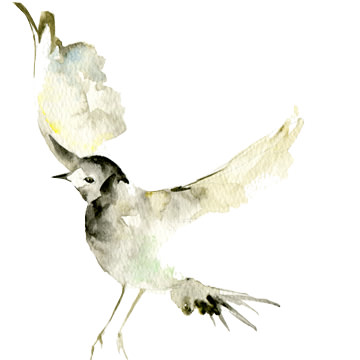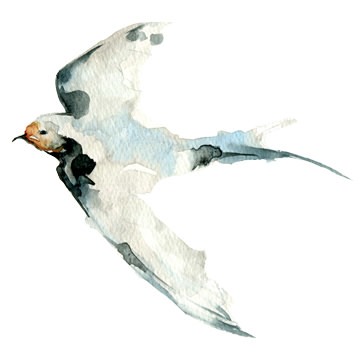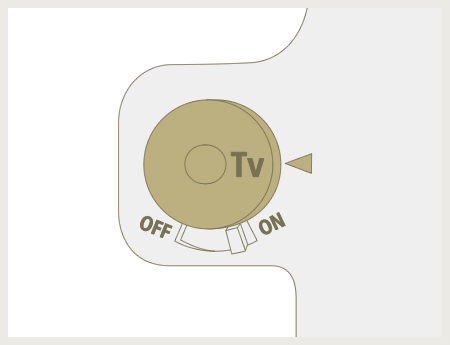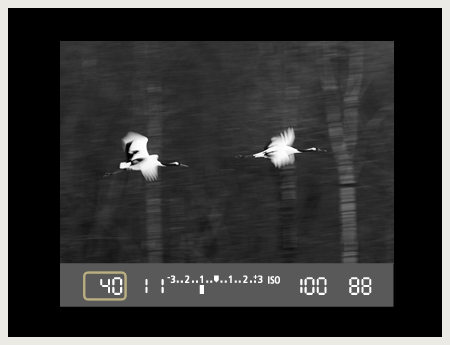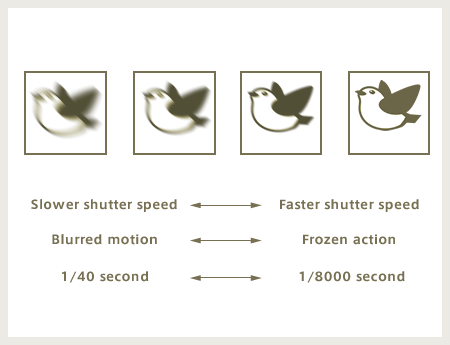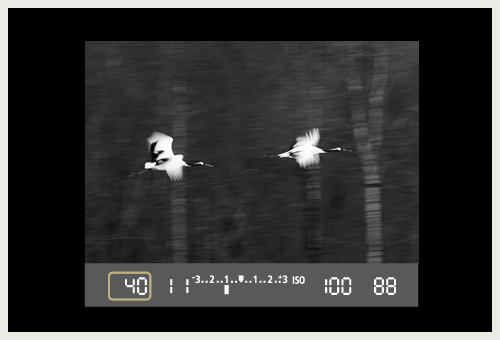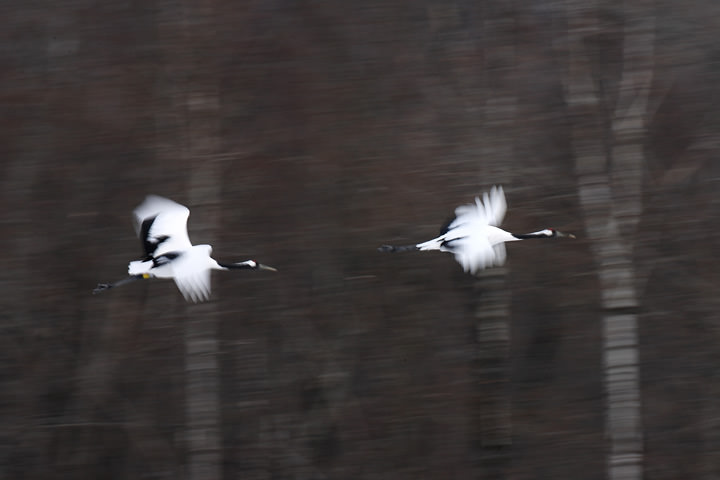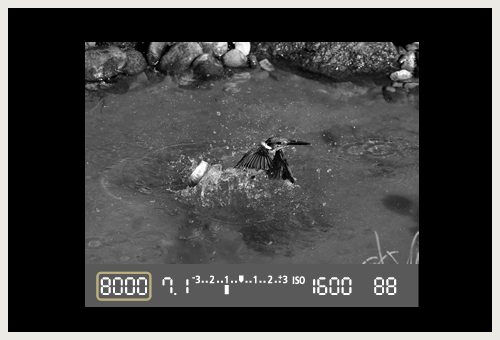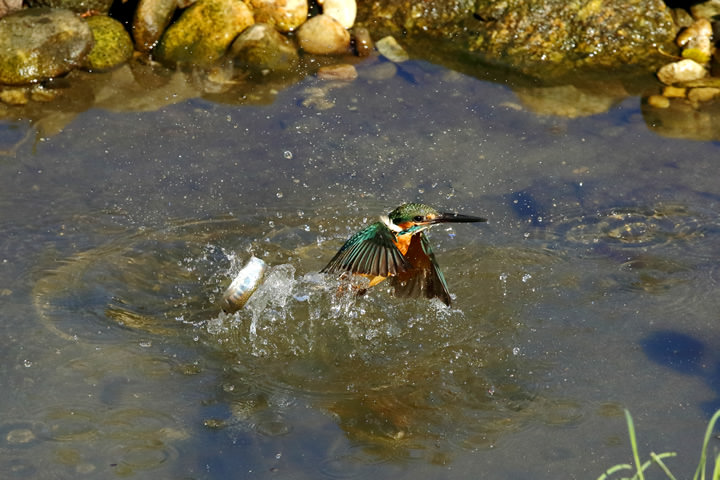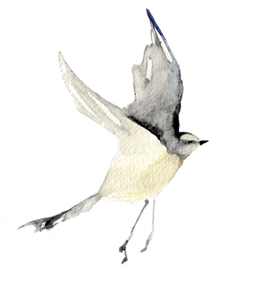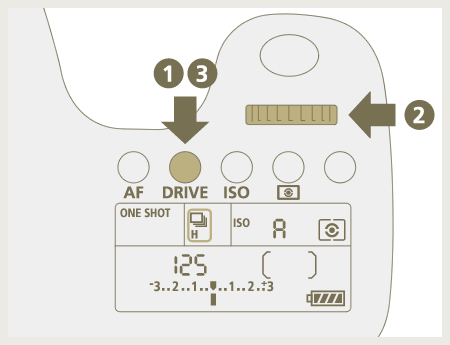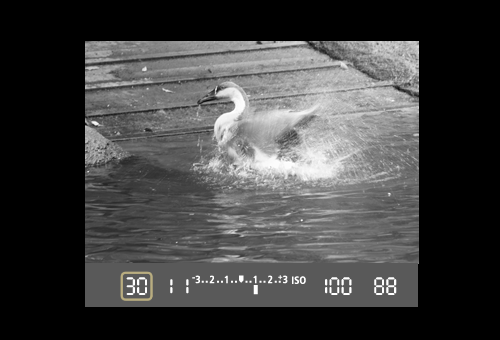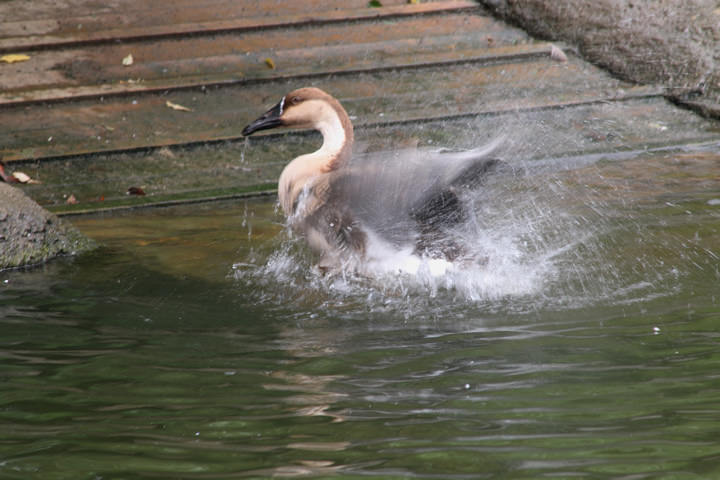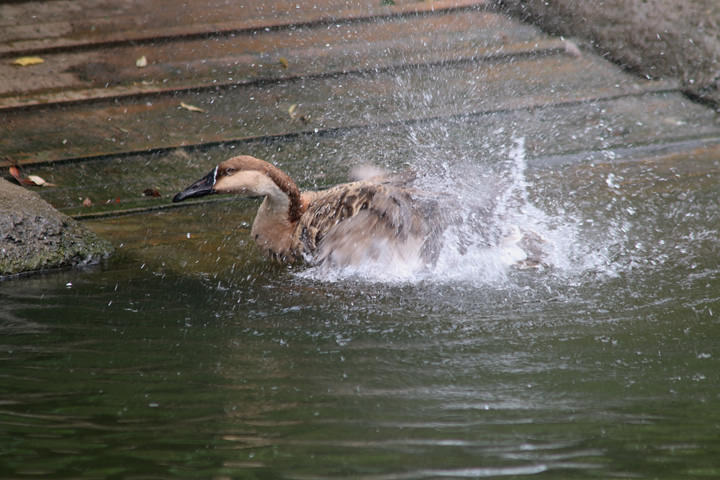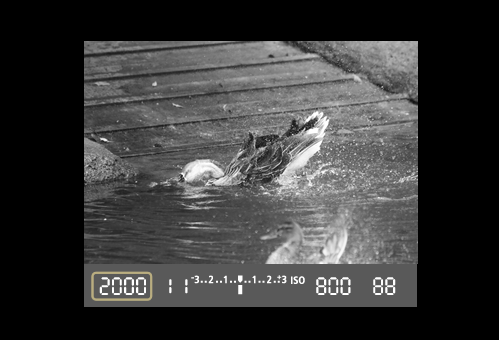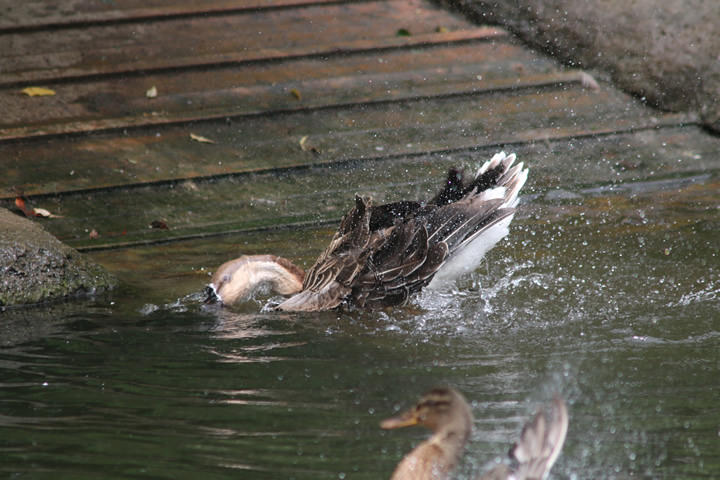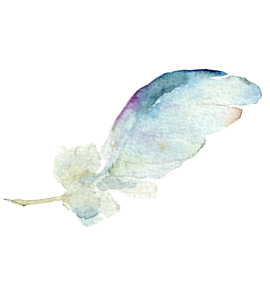At a slower shutter speed (1/30 of a second), not only is the entire swan blurred, but there is also some camera shake as well, resulting in a poor shot. At a medium shutter speed (1/250 of a second), the camera movement is gone but the splash of the water is not completely frozen because the bird is moving so forcefully. Speeding up the shutter speed (to 1/2000 of a second) freezes the splashing water and clearly captures the swan's eye just as it flies from the water.
how to
photograph
wild birds
Let's shoot photos in Tv (shutter priority AE) mode
Birds move too quickly. I want to take photos that completely freeze their flapping wings and the splash of the water around them.
Let's try to use the Tv mode! (Also known as S mode on some cameras.)
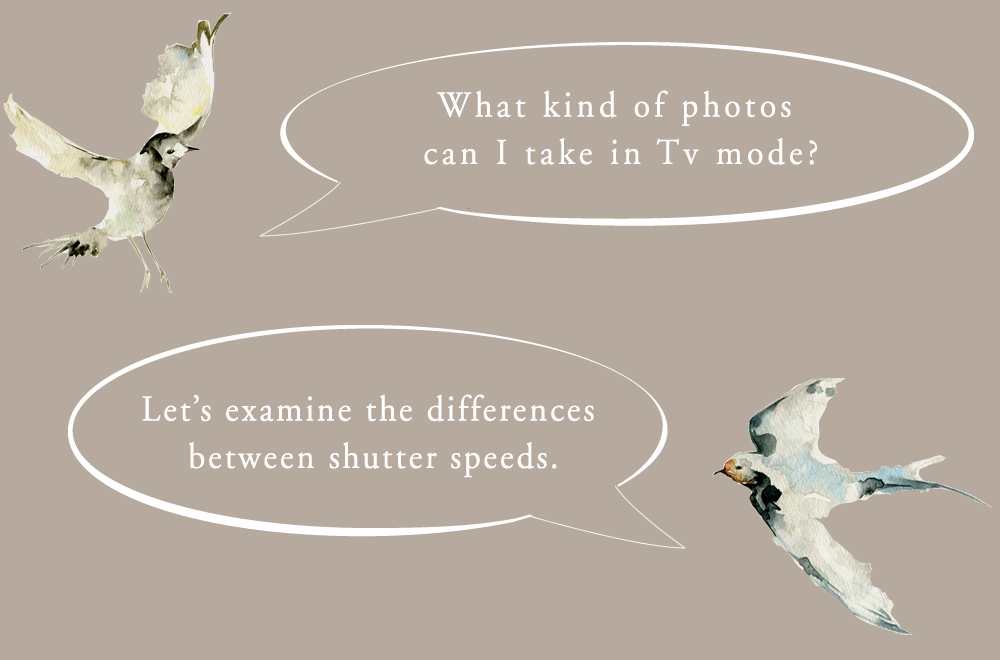
To capture the moment this Common Kingfisher flew out of the water, I set the shutter speed to 1/8000 of a second in Tv mode. Although the bird dropped the fish, this setting froze the moment the bird took off along with the splash of the water.
Note: Some camera models only offer a maximum shutter speed of 1/4000 of a second.
- Aperture value: f/7.1
- Shutter speed: 1/8000 second
- ISO speed: ISO1600
- Exposure compensation: -1
- Focal length: 420mm
- DSLR Camera (APS-C image format)
